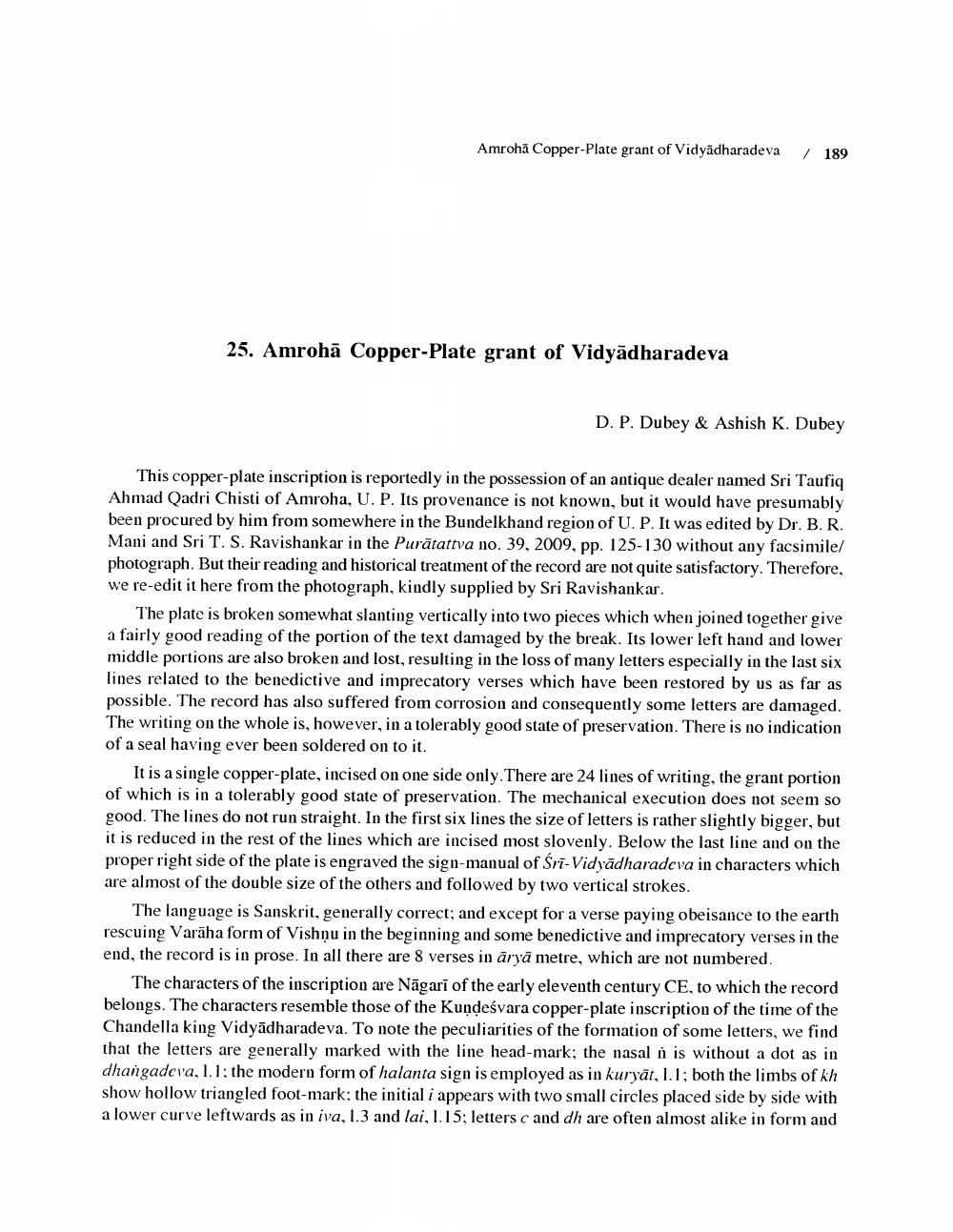________________
Amroha Copper-Plate grant of Vidyādharadeva
189
25. Amrohā Copper-Plate grant of Vidyadharadeva
D. P. Dubey & Ashish K. Dubey
This copper-plate inscription is reportedly in the possession of an antique dealer named Sri Taufiq Ahmad Qadri Chisti of Amroha, U. P. Its provenance is not known, but it would have presumably been procured by him from somewhere in the Bundelkhand region of U. P. It was edited by Dr. B.R. Mani and Sri T. S. Ravishankar in the Purātattva no. 39, 2009, pp. 125-130 without any facsimile/ photograph. But their reading and historical treatment of the record are not quite satisfactory. Therefore, we re-edit it here from the photograph, kindly supplied by Sri Ravishankar.
The plate is broken somewhat slanting vertically into two pieces which when joined together give a fairly good reading of the portion of the text damaged by the break. Its lower left hand and lower middle portions are also broken and lost, resulting in the loss of many letters especially in the last six lines related to the benedictive and imprecatory verses which have been restored by us as far as possible. The record has also suffered from corrosion and consequently some letters are damaged. The writing on the whole is, however, in a tolerably good state of preservation. There is no indication of a seal having ever been soldered on to it.
It is a single copper-plate, incised on one side only. There are 24 lines of writing, the grant portion of which is in a tolerably good state of preservation. The mechanical execution does not seem so good. The lines do not run straight. In the first six lines the size of letters is rather slightly bigger, but it is reduced in the rest of the lines which are incised most slovenly. Below the last line and on the proper right side of the plate is engraved the sign-manual of Sri-Vidyadharadeva in characters which are almost of the double size of the others and followed by two vertical strokes.
The language is Sanskrit, generally correct; and except for a verse paying obeisance to the earth rescuing Varāha form of Vishnu in the beginning and some benedictive and imprecatory verses in the end, the record is in prose. In all there are 8 verses in āryā metre, which are not numbered.
The characters of the inscription are Nāgarī of the early eleventh century CE, to which the record belongs. The characters resemble those of the Kundeśvara copper-plate inscription of the time of the Chandella king Vidyādharadeva. To note the peculiarities of the formation of some letters, we find that the letters are generally marked with the line head-mark; the nasal n is without a dot as in dhangadeva, 1.1: the modern form of halanta sign is employed as in kuryāt, 1.1: both the limbs of kh show hollow triangled foot-mark: the initial i appears with two small circles placed side by side with a lower curve leftwards as in iva, 1.3 and lai, 1.15; letters c and dh are often almost alike in form and




